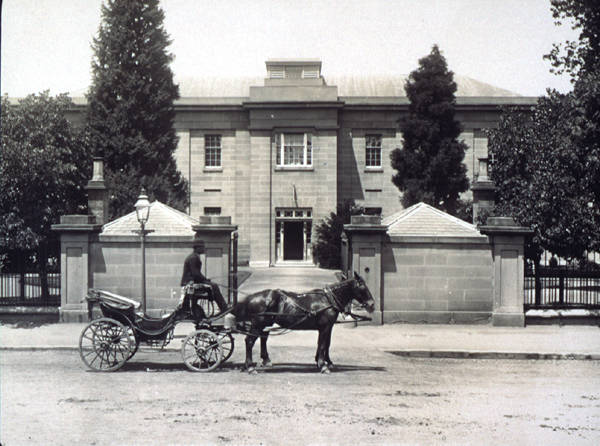 |
 |
|
Royal Hobart Hospital
The Royal Hobart Hospital is the longest-running institution in Tasmania (aside from the military services), beginning in 1804 when the convict medical department provided free services to convicts and settlers. Patients were treated in a succession of wooden huts and rented rooms until the colony's new hospital was completed in 1820. Known variously as the 'government', 'colonial' and 'convict' hospital, it was the headquarters of the medical department in Van Diemen's Land, and not an independent institution until transferral to the colonial government in 1860. The early 1870s were a low point for the hospital. Post-transportation, the government was hampered by decreased income, a gloomy financial outlook and a large burden of dependency with many 'Imperial paupers'. Dr Thomas Smart, chairman of the Board 1878–96, was instrumental in transforming it from a run-down pauper institution into a public hospital with qualified nursing staff, under its first trained matron Florence Abbott. The period 1914–39 saw management and honorary staff problems, Royal Commissions and conflict with the British Medical Association. Under the Hospitals Act (1918), it officially became a general hospital that would admit people from all social strata. Despite controversy regarding his American credentials, Surgeon-Superintendent Ratten's skills brought increased admissions, with patients coming from the north and even interstate. In 1938 the name was changed from the Hobart General Hospital to the Royal Hobart Hospital. Development from 1939 was steady with new drugs, advances in medicine and surgery, and the proliferation of medical specialists. Still on the original site, the hospital has been progressively upgraded and redeveloped. It has been the major teaching hospital for the University of Tasmania since 1968, and is the state referral centre for cardiothoracic surgery, neurosurgery, burns, hyperbaric and diving medicine, neonatal intensive care and high-risk obstetrics. Further reading: A Downie, Our first 100 years, Hobart, 1975; W Rimmer, Portrait of a hospital, Hobart, 1981. Wendy Rimon |
Copyright 2006, Centre for Tasmanian Historical Studies |
